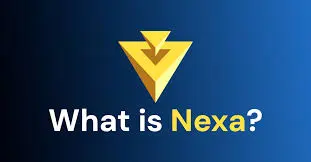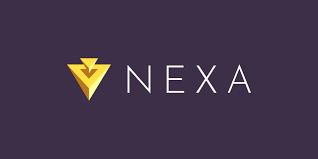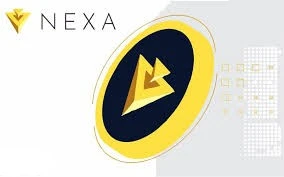Nexa Blockchain: Scalable Decentralized with Smart Contracts
Table of Contents

Nexa is a Mineable Token that you can mine. If you want to learn more about an alternative coin and mineable token that can be mined, you can check Niftyfinances for more information.
In the rapidly evolving world of blockchain technology, scalability and utility are paramount. Enter Nexa, a decentralized blockchain designed to meet these demands head-on. Built on a UTXO Layer-1 foundation, offers smart contracts, native token services, and instant transactions, positioning itself as a formidable player in the crypto space.

What is Nexa?
Nexa’s architecture is built on a UTXO (Unspent Transaction Output) model, offering a robust foundation for blockchain transactions. Combined with its Layer-1 solutions, delivers high scalability and efficiency, addressing common challenges faced by traditional blockchains.
UTXO (Unspent Transaction Output) Model
The UTXO model is a fundamental concept in blockchain technology, first popularized by Bitcoin. In this model, cryptocurrency transactions are represented as unspent outputs from previous transactions. Each UTXO is a discrete unit of value that can be spent in a future transaction.
- How It Works:
- A transaction takes one or more UTXOs as input and creates new UTXOs as outputs.
- Each UTXO is associated with a specific wallet address and is cryptographically secured.
- Once a UTXO is spent, it cannot be reused, ensuring the integrity of the blockchain.
- Key Features of UTXO:
- Transparency: Every transaction and its UTXOs are stored on the blockchain, ensuring full traceability.
- Efficiency: By using discrete inputs and outputs, the UTXO model allows parallel transaction verification, which improves processing speed.
- Security: Each UTXO can only be spent by the private key holder of the associated address, ensuring strong cryptographic security.
Adopts this model to build a highly efficient transaction system while maintaining the decentralization and security essential to blockchain technology.
Layer-1 Solutions in Blockchain Scalability
Layer-1 solutions refer to improvements made at the foundational level of a blockchain’s protocol to enhance its performance and scalability. The layer-1 approach focuses on optimizing the UTXO model to support high transaction throughput and network efficiency.
Benefits
- Increased Transaction Capacity:
Nexa’s architecture supports thousands of transactions per second (TPS) directly on its main chain without relying on Layer-2 solutions or off-chain mechanisms. - Decentralization and Security:
Enhancements at the Layer-1 level maintain the blockchain’s decentralized nature, avoiding centralization risks often associated with off-chain solutions. - Cost Efficiency:
Optimizing transaction validation at the protocol level, ensures lower transaction fees and faster processing times, making the network more user-friendly and scalable. - Long-Term Viability:
Layer-1 improvements provide a sustainable solution for future growth, ensuring the blockchain can handle increasing adoption and transaction volumes.
How Nexa’s Enhances Transaction Efficiency
The innovative Layer-1 architecture goes beyond traditional UTXO implementations by introducing advanced optimizations that improve transaction efficiency and scalability.
Enhancements
- Massive Parallelization:
The system allows multiple transactions to be verified simultaneously, thanks to the independent nature of UTXOs. This parallelization drastically reduces processing times and increases throughput. - Compact Blockchain Size:
Employs techniques to minimize the size of blockchain data, making it easier for nodes to sync and validate transactions. This ensures that the network remains lightweight and accessible to a wide range of participants. - Smart Contract Integration:
Unlike traditional UTXO blockchains, Nexa introduces enhanced capabilities to support smart contracts while maintaining the efficiency of the UTXO model. This opens the door for more complex and decentralized applications without compromising speed or security. - Low Latency Transactions:
Optimized consensus mechanisms and transaction propagation ensure low-latency transaction confirmations, enhancing the user experience for both individuals and businesses. - Scalable Microtransactions:
By reducing transaction fees and processing times, Nexa’s architecture is well-suited for microtransactions, enabling applications like tipping, content monetization, and micropayments on a global scale.
Key Features of Nexa
Scalability
One of Nexa’s standout features is its ability to scale effectively at the Layer-1 level. Unlike many blockchains that rely on Layer-2 solutions, achieves high throughput and low latency directly within its protocol.
- Massive Transaction Throughput: supports thousands of transactions per second (TPS), making it suitable for global adoption.
- Low Fees: By optimizing the blockchain size and transaction validation, ensures minimal transaction costs, even during periods of high demand.
- Parallel Processing: The UTXO model enables multiple transactions to be processed simultaneously, further boosting network performance.
Smart Contracts
Integrates smart contract capabilities directly into its UTXO framework. This allows developers to build decentralized applications (dApps) on a secure and efficient blockchain without the typical complexities associated with UTXO-based systems.
- Flexibility: Developers can create complex, programmable interactions on the blockchain.
- Security: Smart contracts benefit from the inherent security of the UTXO model, reducing vulnerabilities.
Why Nexa?
Nexa combines the proven security of the UTXO model with modern features like scalability, smart contracts, and tokenization to deliver a blockchain platform designed for real-world adoption. Its focus on Layer-1 scalability and low transaction costs makes it a strong contender in the evolving blockchain ecosystem. Whether for peer-to-peer payments, decentralized applications, or tokenized assets, provides the tools and infrastructure to build a more efficient, decentralized future.

Nexa’s Consensus Mechanism
Employs a Proof-of-Work (PoW) consensus mechanism, a widely trusted protocol in blockchain technology for ensuring security and decentralization. PoW plays a critical role in validating transactions, securing the network, and maintaining trustless interactions between participants.
Proof-of-Work (PoW) Consensus
Proof-of-work is a consensus algorithm where miners compete to solve complex mathematical problems (cryptographic puzzles) to validate new transactions and add blocks to the blockchain. In Nexa’s network, this system ensures transparency and integrity, as no single party can control the blockchain without significant computational resources.
How PoW Works
- Transaction Verification:
Transactions are grouped into a block. Miners verify the legitimacy of these transactions by ensuring they meet the blockchain’s rules. - Puzzle Solving:
Miners compete to find a solution to a cryptographic puzzle using computational power. This process requires significant energy, making it expensive and difficult for malicious actors to manipulate the system. - Block Addition:
The first miner to solve the puzzle broadcasts their solution to the network. Other nodes verify the solution, and if valid, the new block is added to the blockchain. - Reward Distribution:
The miner who successfully solves the puzzle is rewarded with Nexa coins as an incentive for their efforts, along with transaction fees from the processed transactions.
PoW Ensures Network Security and Decentralization
Proof-of-Work is foundational to Nexa’s ability to provide a secure and decentralized blockchain environment.
Network Security:
- Cryptographic Difficulty:
The PoW mechanism ensures that miners must expend significant computational resources to validate transactions and add blocks. This makes it extremely difficult and costly for attackers to execute malicious actions, such as a 51% attack. - Immutable Ledger:
Once a block is added to the blockchain, altering its contents would require re-mining all subsequent blocks, an infeasible task for any malicious actor due to the immense computational power required.
Decentralization:
- Permissionless Mining:
PoW allows anyone with the appropriate hardware and software to participate in mining. This ensures that control of the blockchain remains distributed among a diverse group of participants. - No Central Authority:
PoW’s design eliminates the need for centralized control, allowing the Nexa blockchain to operate as a truly decentralized, trustless system.

How to Buy Nexa (NEXA)
There are several methods to acquire Nexa, whether you’re a first-time crypto investor or a seasoned trader.
Buy Nexa on Cryptocurrency Exchanges
The easiest way to purchase Nexa is through a cryptocurrency exchange that supports the token.
- Step 1: Choose an Exchange
Available on several popular cryptocurrency exchanges. Some common platforms to check include:- Binance (if listed)
- KuCoin
- Gate.io
- P2P exchanges: Sometimes, Nexa may be available through decentralized or peer-to-peer exchanges like LocalBitcoins, Paxful, or HodlHodl.
- Step 2: Set Up an Account
If you’re new to a particular exchange, you’ll need to create an account. This typically involves:- Provide your email address.
- Completing KYC (Know Your Customer) verification (depending on the exchange and jurisdiction).
- Enabling two-factor authentication (2FA) for enhanced security.
- Step 3: Deposit Funds
Deposit funds into your exchange account. You can deposit using:- Fiat Currency: Depositing USD, EUR, etc., via bank transfers, credit/debit cards, or other payment methods.
- Crypto Deposits: If you already hold cryptocurrencies, you can transfer them into your exchange account and trade them.
- Step 4: Buy Nexa
Once your account is funded, search for the Nexa trading pair (for example, NEXA/BTC/USDT). Place a buy order at the current market price or a limit order depending on your preference.
How to Store Nexa Safely
After purchasing, storing it securely is critical to ensure that your funds are safe. There are a few options for storing Nexa, each with its level of security and ease of access.
Software Wallet
A software wallet is a convenient option for everyday use and is accessible via desktop or mobile devices.
- Nexa Full Node Wallet (QT Wallet):
The Nexa Full Node Wallet is an official wallet that stores securely and is highly recommended for users who want to contribute to the decentralization of the network by hosting a full node.- You can download the wallet from the official website.
- It requires downloading the entire blockchain to your device, so it might take up considerable storage.
Hardware Wallets (Cold Storage)
For enhanced security, consider using hardware wallets. These wallets store your private keys offline, making them less vulnerable to hacks and online threats.
- Supported Hardware Wallets:
Can be stored on popular hardware wallets like:- Ledger Nano S / X
- Trezor
Hardware wallets generally come with setup instructions and are a solid option if you’re storing significant amounts of Nexa for the long term.
Web Wallets
While less secure than hardware wallets, web wallets like MetaMask or custom web wallets (if available) may be convenient for quick access. However, web wallets are more vulnerable to phishing attacks and hacking attempts, so use them carefully and with added protection such as 2FA.
Best Practices for Storing Nexa Securely
- Back-Up Your Wallets:
Always back up your wallet’s private keys and recovery phrase in a safe, offline location. These are essential to regain access to your funds if you lose access to your wallet. - Use Two-Factor Authentication (2FA):
For additional security, enable 2FA on any exchanges or wallets that support it. This adds a layer of protection, requiring both your password and a code from your phone. - Avoid Storing Nexa on Exchanges Long-Term:
While exchanges offer convenience, storing on an exchange long-term exposes you to risks, including exchange hacks or issues with the platform itself. Transfer to a secure wallet, especially for long-term storage. - Watch for Phishing Attacks:
Be cautious of phishing attempts, especially when using web wallets or exchanges. Always double-check the website URL and avoid clicking on suspicious links.
Mining Nexa
Nexa is a relatively new blockchain with a focus on scalability and efficiency. Launched in June 2022, originally supported CPU mining but transitioned to GPU mining in late November 2022. The network leverages a unique mining algorithm, Nexapow, designed to optimize scalability and transaction speed. In this guide, we’ll walk you through the essentials of mining, including the mining algorithm, rewards, software, pools, and best practices for mining.
Mining Algorithm: Nexapow
Utilizes the Nexapow algorithm, a unique Proof-of-Work (PoW) mechanism that optimizes the scalability of the network. Nexapow solves the typical blockchain bottlenecks related to signature signing and UTXO lookups.
Key Features of Nexapow:
- SHA-256 Hashing with Schnorr Signatures:
- The current algorithm utilizes SHA-256 hashing along with Schnorr signatures. This allows for efficient signature aggregation, reducing the computational burden on the network and speeding up transaction processing.
- Scalability:
Nexapow is designed to scale to global capacity, addressing key performance issues that hinder other PoW blockchains. Eventually, the algorithm will be upgraded to handle UTXO lookups, which will further enhance scalability.
Using Nexapow, ensures a more efficient consensus mechanism compared to traditional PoW blockchains, making it faster and more scalable while maintaining decentralization and security.
Mining Rewards and Block Emission
Mining rewards are structured similarly to Bitcoin but with unique characteristics.
Block Rewards:
- Current Block Reward: 10 million per block.
- Block Time: Approximately 2 minutes between blocks, resulting in around 720 blocks per day.
- Total Daily Emission: ~7.2 billion coins are mined daily.
- Max Supply: has a max supply of 21 trillion coins, expected to be reached in approximately 140 years.
Block Halving:
Like Bitcoin, Nexa’s mining rewards will halve approximately every 4 years, reducing the number of coins generated per block. This system ensures that the currency remains scarce over time, promoting long-term stability.
Recommended Mining Software
To mine, you’ll need to use third-party mining software compatible with the Nexapow algorithm.
- BZMiner: A popular mining software for both AMD and NVIDIA GPUs.
- WildRig: A versatile miner that works well for various GPU types, with optimization for Nexa’s Nexapow algorithm.
- Rigel: A mining software that supports Nexa and is designed for performance and efficiency.
- LolMiner: Known for its efficiency and broad compatibility with various GPUs, LolMiner is a reliable choice for mining.
Choosing a Mining Pool
Mining alone (solo mining) can be less rewarding, especially if you lack the computational power of large mining farms. Instead, joining a mining pool is recommended. In a pool, miners combine their computing power to solve blocks more quickly, sharing the block rewards proportionally.
Popular Nexa Mining Pools:
- Vipor-Pool
- Acc-Pool
- WoolyPooly
- 2Miners
- Pool 137
- RPlant
- Kryptex
- ZergPool
- P1Pool
- F2Pool
Mining Pool Comparison:
Several platforms provide real-time comparisons and profitability metrics across different mining pools:
- MiningPoolStats: A comprehensive mining pool tracker.
- Minerstat: Offers mining management and monitoring tools, including pool recommendations.
- Profit-Mine: A mining profitability calculator.
- Vipor.Net: mining pool with detailed statistics.
- Hashrate.No: Tracks mining pool performance.
When selecting a pool, consider the fee structure, location, hashrate, and payout system. Choosing a pool with higher hash rates increases your chances of earning rewards, but ensure that the fees are reasonable and payouts are consistent.
How to Start Mining Nexa: Step-by-Step Process
Step 1: Set Up a Wallet
Before you start mining, create a full-node-qt wallet to securely store your mining rewards. You can create a wallet at the official node setup page or use an address from your existing wallet. It is highly advised not to mine directly to exchange wallets to avoid the risk of losing funds.
Step 2: Install Mining Software
After setting up your wallet, download and install mining software compatible with Nexa’s Nexapow algorithm. Depending on your hardware (AMD or NVIDIA GPUs), you can choose from software like BZMiner, WildRig, Rigel, or LolMiner.
Step 3: Choose a Mining Pool
Select a mining pool that supports Nexa. Use platforms like MiningPoolStats to compare different pools and find the best one for your setup. Pools like Vipor-Pool, 2Miners, and WoolyPooly are popular options.
Step 4: Configure Your Mining Software
Once you’ve chosen a pool, configure your mining software by entering the pool’s URL, port, and wallet address. This ensures that your rewards go to your wallet rather than the pool’s.
Step 5: Start Mining
Run the mining software and monitor your performance. Keep track of hash rates, power consumption, and temperature to ensure optimal mining conditions.
Best Practices for Mining
To maximize your mining efficiency and minimize risks, here are a few tips:
- Hardware Optimization:
- Keep your GPU temperatures low to avoid overheating. Consider using cooling solutions or undervolting your GPUs for better efficiency.
- Regularly monitor your hash rate and power usage to make sure you’re mining efficiently.
- Avoid Mining to Exchanges:
Always mine to your wallet (preferably a full-node-qt wallet) instead of exchange wallets to avoid potential loss of funds. - Stay Updated:
Since Nexa is an evolving project, keep an eye on updates regarding software, mining algorithms, and network upgrades. Join the community for news and announcements about the latest changes.
Nexa stands out as a scalable and versatile blockchain platform, offering advanced features like smart contracts and native token services. Its commitment to instant transactions and a robust ecosystem make it a compelling choice for developers and users seeking a forward-thinking blockchain solution. As the crypto landscape continues to evolve, Nexa’s innovative approach positions it well for future growth and adoption.